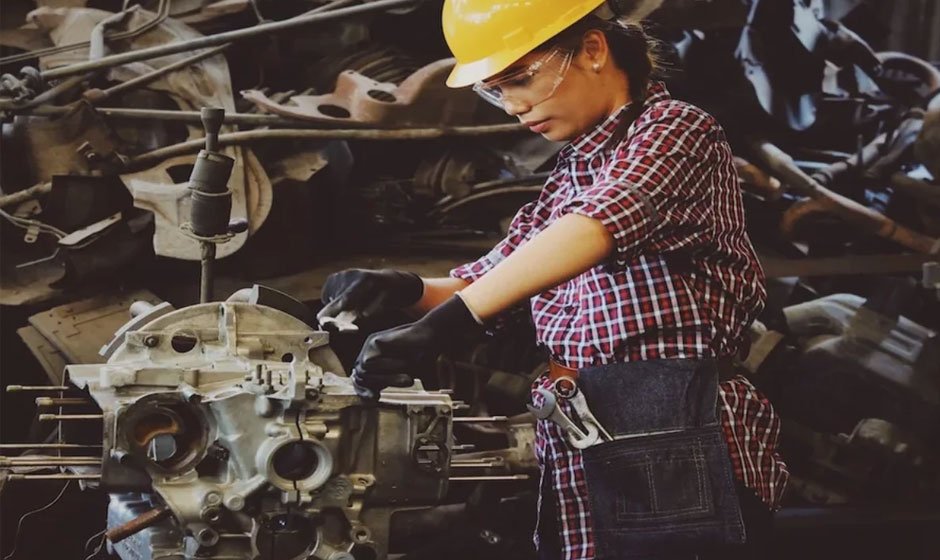Gas turbines are widely used in various industries, including power generation, aviation, and oil and gas. They are efficient, and reliable, and play a crucial role in meeting the energy demands of today’s world. However, like any other mechanical equipment, gas turbines require regular maintenance and repair to ensure optimal performance. One critical component that often requires attention is the gas turbine nozzle.
What is a Gas Turbine Nozzle?
The gas turbine nozzle is a vital part of the turbine’s combustion system. It is responsible for directing and controlling the flow of hot gases produced during the combustion process. The nozzle’s primary function is to accelerate the gases, converting their thermal energy into kinetic energy to drive the turbine’s rotor. The nozzle also helps regulate the combustion process, ensuring efficient fuel-air mixing and combustion stability.
The Benefits of Gas Turbine Nozzle Repair
Gas turbine nozzle repair offers several benefits that directly impact the turbine’s performance and overall operational efficiency. Here are some key advantages of investing in nozzle repair:
- Improved Efficiency: Turbine fuel nozzle repair helps to restore the original shape and condition of the turbine nozzle, allowing for better flow control and more efficient combustion. This leads to improved fuel efficiency and reduced operating costs.
- Enhanced Power Output: By repairing and optimizing the nozzle geometry, the gas turbine can generate more power for a given amount of fuel. This increase in power output translates into higher productivity and profitability for the turbine operator.
- Extended Lifespan: Nozzle repair can help to extend the lifespan of the gas turbine by addressing issues such as erosion, corrosion, and thermal fatigue. By preventing further damage and deterioration, nozzle repair helps to ensure the long-term reliability and availability of the turbine.
- Cost Savings: Repairing the nozzle is often more cost-effective than replacing it entirely. By investing in nozzle repair, turbine operators can save on the high costs associated with purchasing and installing a new nozzle. Additionally, improved efficiency and power output can lead to significant fuel savings over time.
- Reduced Downtime: Nozzle repair can be performed quickly and efficiently, minimizing the turbine’s downtime. This allows for a faster return to operation and reduces the impact on overall productivity and revenue generation.
- Increased Safety: Repairing damaged nozzles helps to maintain the turbine’s safe and reliable operation. By addressing issues such as leaks or structural integrity problems, nozzle repair enhances the safety of both the turbine and personnel working in its vicinity.
- Environmental Benefits: Repairing the nozzle can help to reduce emissions from the gas turbine, contributing to cleaner and more sustainable energy production. By optimizing combustion and improving efficiency, nozzle repair helps to minimize the turbine’s environmental footprint.
Overall, gas turbine nozzle repair offers a range of significant benefits, including improved efficiency, enhanced power output, extended lifespan, cost savings, reduced downtime, increased safety, and environmental advantages. Investing in nozzle repair is a wise decision for turbine operators looking to optimize performance, reduce costs, and promote sustainable energy production.
The Nozzle Repair Process
The repair process for gas turbine nozzles involves several steps to ensure a thorough restoration of their performance and functionality. Here is an overview of the typical nozzle repair process:
- Inspection: The first step in the repair process is to thoroughly inspect the gas turbine nozzle for any signs of damage, wear, or corrosion. This may involve visual inspections, measurements, and non-destructive testing techniques such as ultrasonic or radiographic testing.
- Cleaning: Once the nozzle has been inspected, it needs to be cleaned to remove any dirt, debris, or contaminants that may have accumulated. This can be done using various cleaning methods such as chemical cleaning, abrasive blasting, or high-pressure water jetting.
- Repair or replacement of damaged components: If any components of the nozzle are found to be damaged or worn out, they need to be repaired or replaced. This may involve welding, re-machining, or sourcing new parts.
- Coating application: Gas turbine nozzles often require protective coatings to enhance their durability and performance. These coatings can help prevent corrosion, erosion, or thermal degradation. The application of coatings may involve processes such as thermal spraying or plasma spraying.
- Machining and reassembly: After the necessary repairs and coatings have been applied, the nozzle may need to undergo machining to achieve the desired dimensions and surface finish. Once the machining is complete, the nozzle is reassembled, ensuring that all components are properly aligned and secured.
- Testing and quality assurance: Before the repaired nozzle can be returned to service, it needs to undergo rigorous testing to ensure its performance and functionality. This may involve various tests such as pressure testing, flow testing, or performance testing. Quality assurance procedures are also followed to ensure that the repaired nozzle meets all required specifications and standards.
Conclusion
Gas turbine nozzle repair is a critical aspect of turbine maintenance and plays a significant role in ensuring optimal performance, efficiency, and reliability. By investing in regular nozzle inspection, repair, and maintenance, operators can extend the equipment’s lifespan, improve combustion stability, and achieve significant cost savings. Moreover, proper nozzle repair helps maintain the turbine’s reliability and safety, ensuring uninterrupted operation and compliance with environmental regulations. With the support of experienced and specialized repair service providers, gas turbine operators can maximize the benefits of nozzle repair and keep their turbines operating at peak performance.

